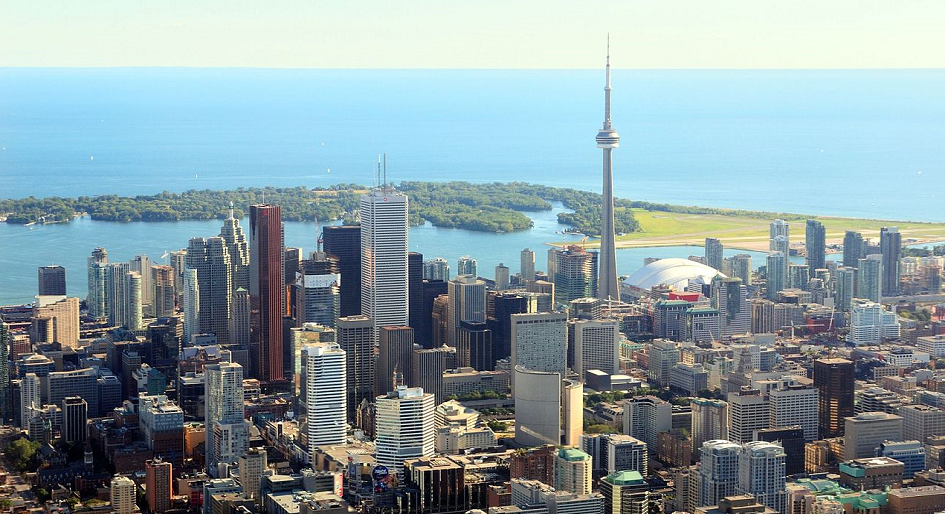A new survey from Urbanation looking at rental projects constructed after 2005 paints a startling picture for owners and managers of once-coveted downtown properties: within the former City of Toronto, the sharp rise in vacancies from 0.7 per cent last year to to 2.8 per cent today underscores just how detrimental the ongoing pandemic has been.
While the outer regions of the GTA are fairing better, Toronto’s vacancy rate as a whole rose considerably to 2.4 per cent—a number three times higher than it was in Q3-2019 (0.8 per cent) and the first time in ten years it surpassed 2 per cent.
“The GTA rental market showed some improvement in the third quarter within more suburban areas,” observed Shaun Hildebrand, President of Urbanation, calling the weakened conditions in the downtown core a result of renters needing to reevaluate their high cost of living. “While it was encouraging to see the large increase in lease activity in the third quarter as renters took advantage of recent discounts, the market will continue to face challenges heading into 2021 from restrained demand caused by COVID-19 and elevated supply levels.”
According to the new data, total occupancy in newer purpose-built rental buildings across the GTA, including recently completed buildings still in their initial lease-up, remained essentially unchanged from a year ago at an average of 90 per cent. However, within the four buildings and 988 units that reached completion so far in 2020, occupancy averaged just 34 per cent; by comparison, the eight projects totaling 3,155 units that reached completion in Q3 last year had an average occupancy rate nearly double that.
Lower monthly rents
For brand new units that became available during the third quarter of 2020, average monthly rents declined by 5.8 per cent year-over-year to $2,373. However, Hildebrand says some of the rent decline could be attributed to a decrease in the average available unit size to a record low 740 square feet from 767 square feet a year ago, indicating that turnover has been relatively stronger for smaller units.
“The rise in unit turnover for smaller units was evident across both the purpose-built rental and condominium rental markets,” Hildebrand says. “This reflects the nature of the economic challenges caused by the pandemic, which have disproportionately impacted young adults who have likely moved back home or to a less expensive rental outside of the city. This is in addition to the loss in student population and lack of new immigrants, which has occurred at the same time as a large number of newly completed small units have hit the market.”
Urbanation research also found that most rental buildings surveyed for Q3 were offering incentives to attract new tenants, which mainly included one month of free rent, move-in bonuses and, to a lesser extent, two months of free rent.
Development and condo activity
Meanwhile on the development side, construction of new rental projects remained elevated in the third quarter compared to previous years, with 13,131 units in the works—down from the recent high of 13,663 units in Q1-2020 but up from a year ago (11,522 units). A total of 5,276 new rental units are scheduled for completion in the GTA in 2021, the highest level in more than 25 years and up from 988 units completed in 2020.
In terms of condominium rentals, total unfurnished, long-term lease transaction volume in the GTA grew 39 per cent year-over-year during the third quarter to a record high 13,140 units. Activity surged due to a doubling in the number of condo rentals listed for lease during the quarter to 23,288 units and an annual reduction in average monthly rents of 9.4 per cent to $2,249 — the lowest rent level since Q1-2018.
While there were some signs of improvement in the market in the last three months as the ratio of leases-to-listings increased to 56 per cent from 45 per cent in Q2, the data suggests that rents will continue to face further downward pressure due to the record amount of supply on the market. At the end of Q3, active condo rental listings totaled 9,154 units, 4.5 times higher than a year earlier.
The 7.5 per cent year-over-year decline in average per square foot condo rents in the GTA in the third quarter to $3.19 psf was heavily weighed down by weakness in the former City of Toronto, where average per square rents fell 12.3 per cent annually to $3.41 psf ($2,290). In the outer 416 region (Scarborough, Etobicoke, North York), the annual decline in rents was 4.5 per cent to $3.03 psf ($2,219), while 905 region rents were down the least by 2.5 per cent annually to $2.73 psf ($2,162).
Also of note, average rents increased 1.1 per cent quarter-over-quarter in both the outer 416 and 905 regions, while continuing to fall in the former City of Toronto with an accelerated quarterly decline of 5 per cent. Within the former City of Toronto, the steepest year-over-year declines in average per square foot rents were found in the East Bloor/The Village submarket near U of T and Ryerson University (-16.8%), the Downtown Core (16.0%), the Entertainment District (-15.9%), and CityPlace (-14.3%).
For more on this report, visit www.urbanation.ca






2.8%? We should be so lucky. Calgary is around 10 times that number and that doesn’t count all of the available ‘sub-let’ space in our downtown. We have buildings that are completely vacant. Yes, that’s buildings…plural.